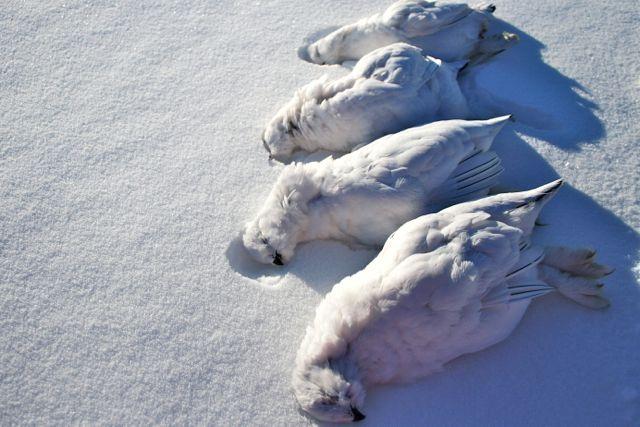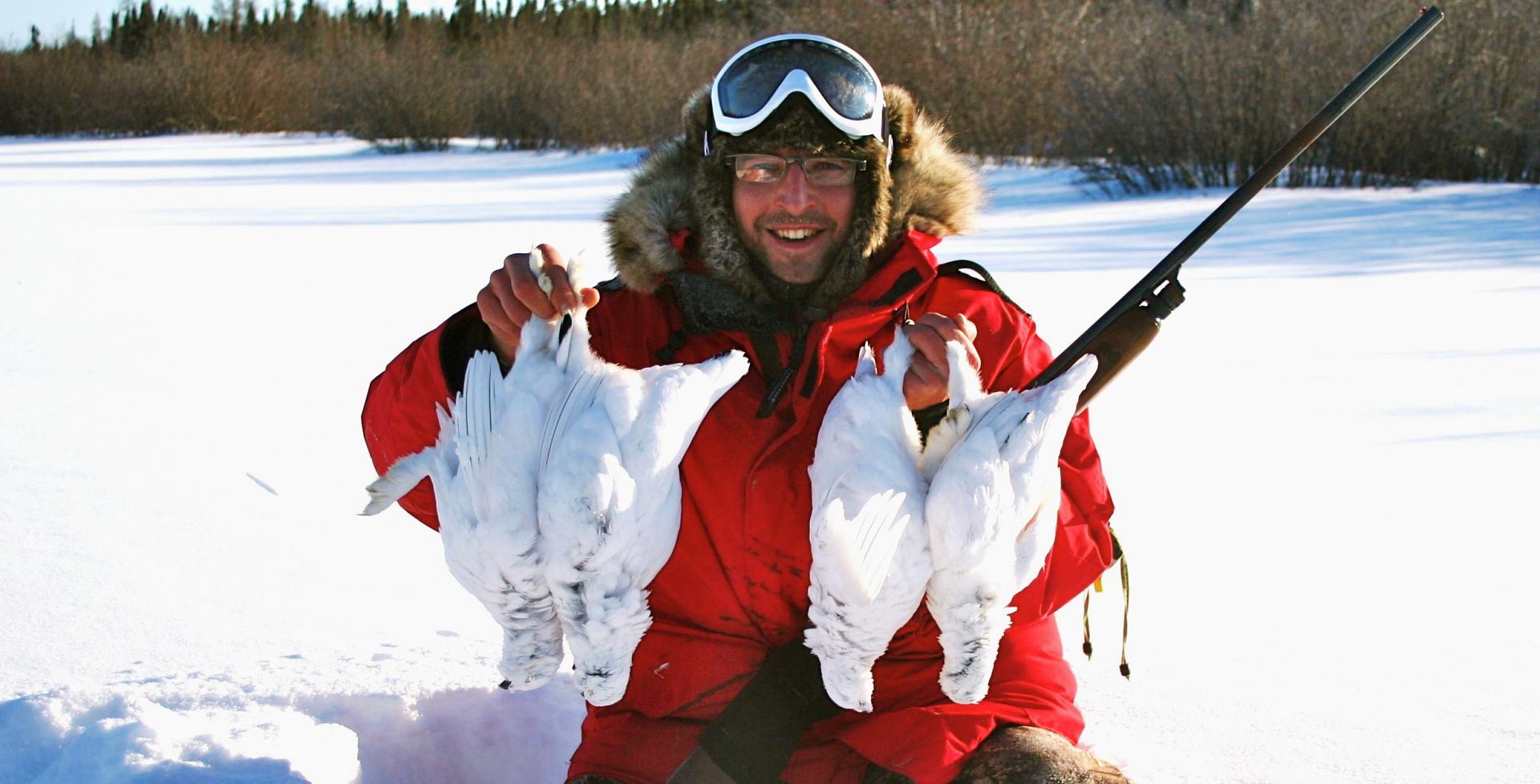Snow birds
How to venture north for willow ptarmigan—some of the best wingshooting in Canada
Advertisement
While Manitoba’s willow ptarmigan season may have just ended, here’s what you need to know to start planning for next year if you’ve never hunted for these tasty birds of the north.

It was February, and my hunting buddy and I were after willow ptarmigan in the endless wilderness of northeastern Manitoba. We’d spent several hours inspecting small, interconnected lakes by snowmobile when we crossed paths with several fresh strings of ptarmigan tracks standing out in the otherwise uninterrupted blanket of snow.
Advertisement
Nearly all the tracks were concentrated around tall stands of willow and alder along the lake’s shore, moving east. We continued in that direction and our sleds soon flushed the first covey. Had the birds kept still, we would never have spotted them. Instead, they burst from their near-invisible hideout, only to perch conspicuously on exposed branches farther down along the frozen shoreline.
Parking our snowmobiles, we planned our approach on foot and snuck into range without too much difficulty. Our humble old 20-gauge and .410 shotguns soon sounded off, rewarding us with five birds—an excellent first volley to start the day.
It’s hard not to have a soft spot for willow ptarmigan. They’re beautiful, delicious, locally plentiful and, in a way, exotic—most Canadians aren’t familiar with these birds, let alone the exceptional wingshooting opportunities they offer each winter across the vast North. Indeed, willow ptarmigan might very well be Canada’s best-kept secret in upland bird hunting. Long seasons, generous bag limits, no real need for a gun dog, excellent table quality and the chance for an exciting northern adventure—these are just some of the reasons ptarmigan hunting is such a blast. Here’s how to get in on the action.
Advertisement

